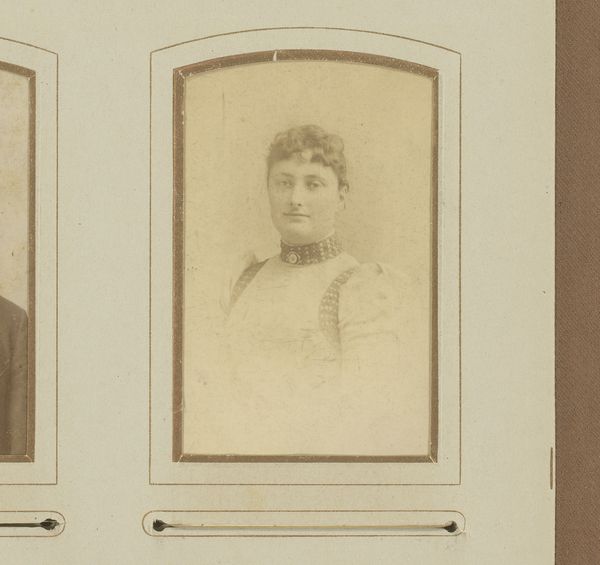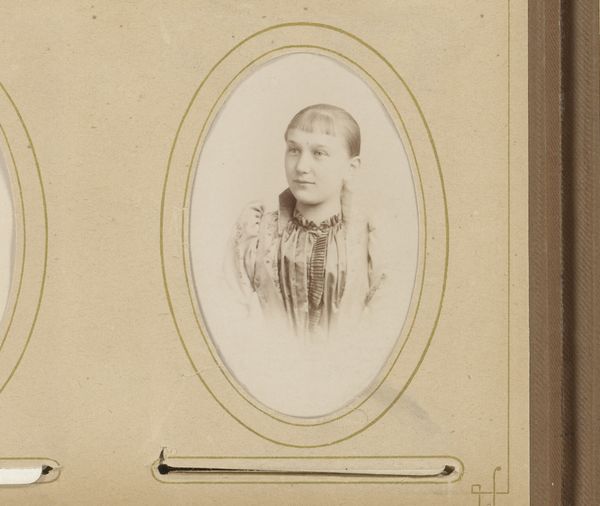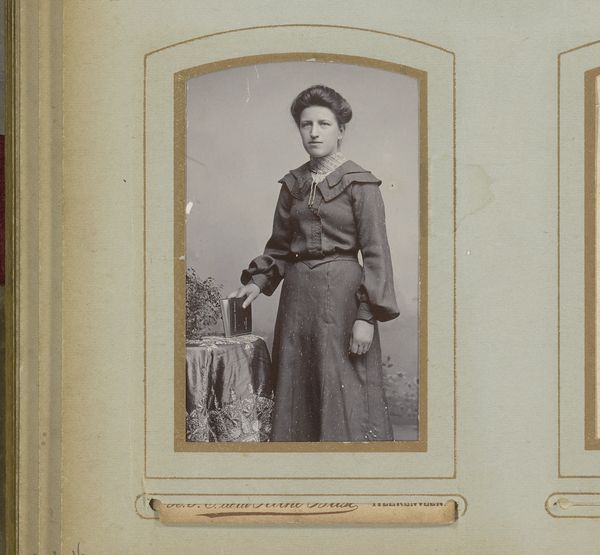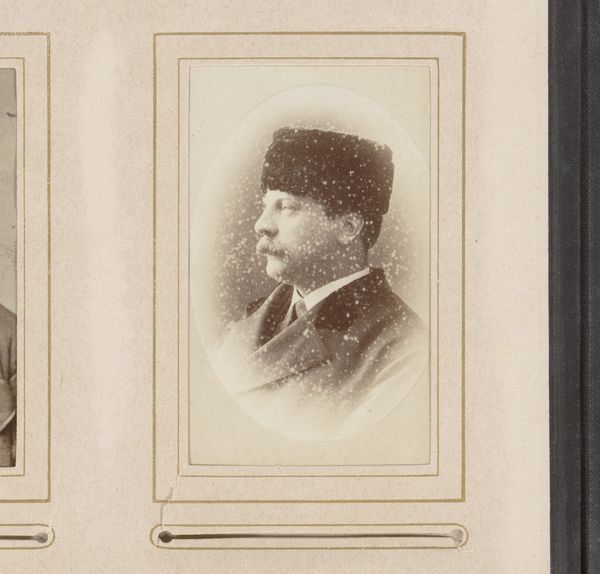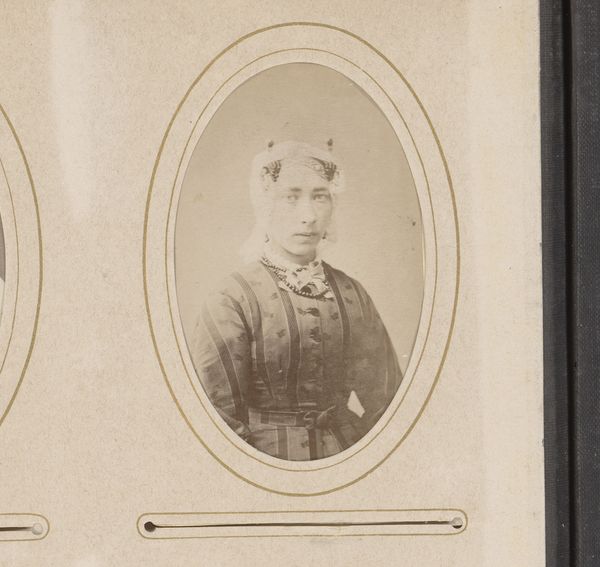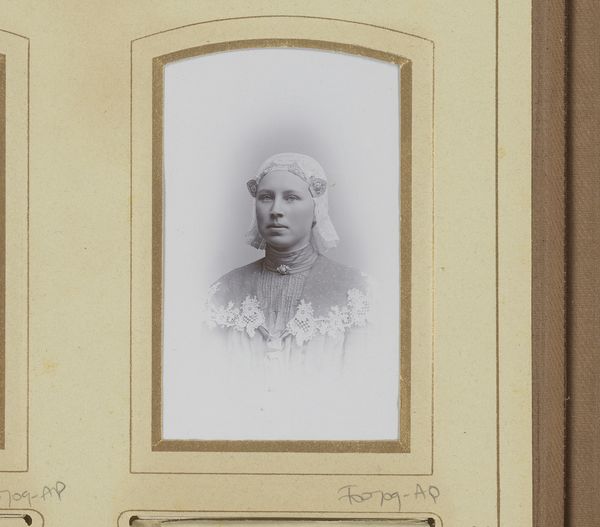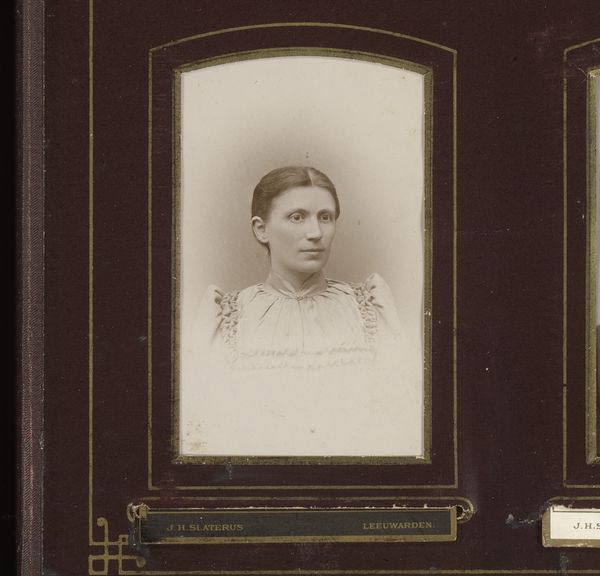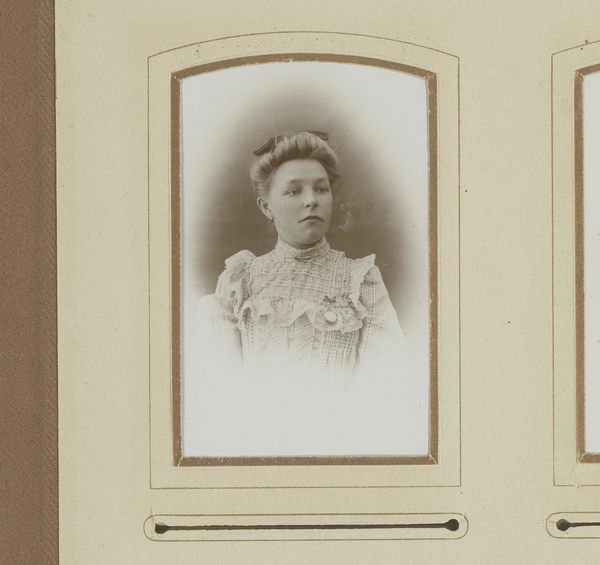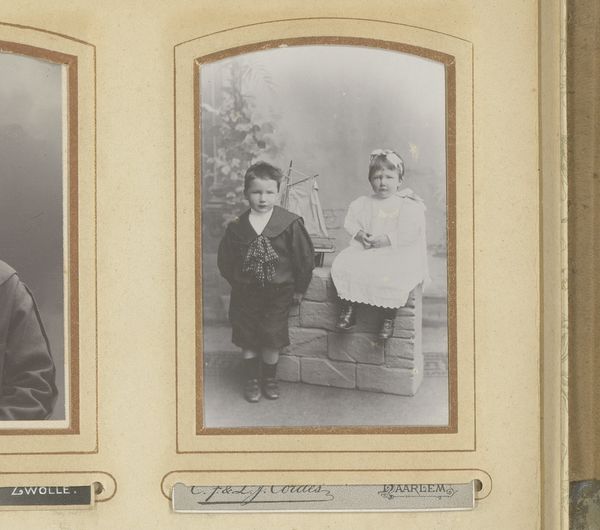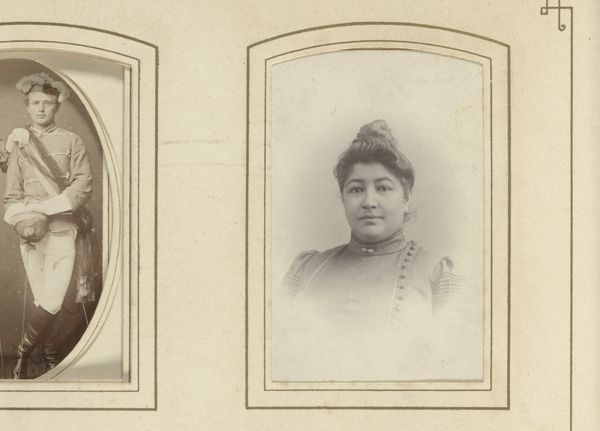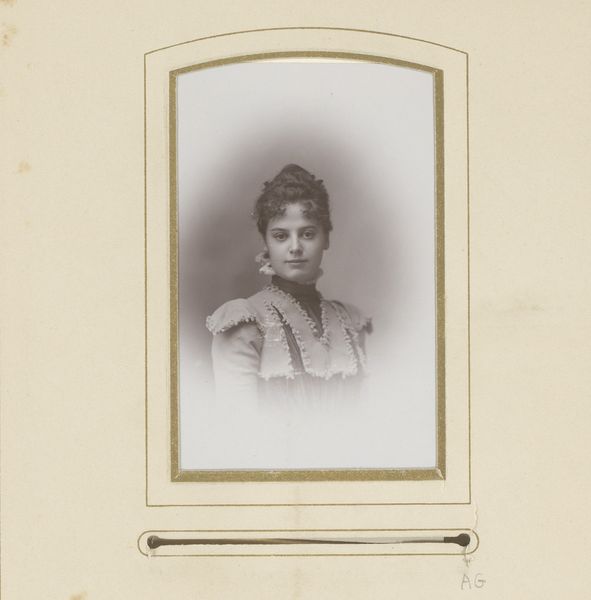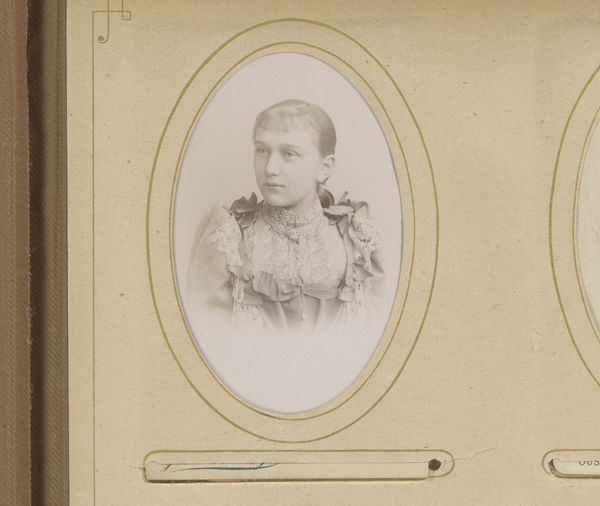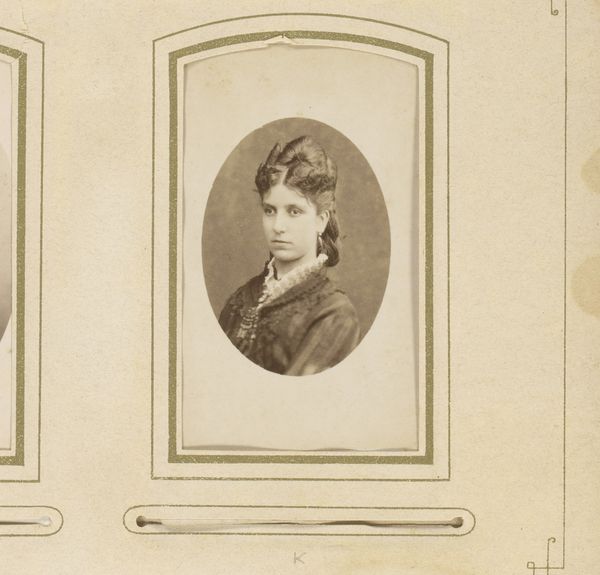
daguerreotype, photography, gelatin-silver-print, albumen-print
#
portrait
#
self-portrait
#
daguerreotype
#
photography
#
gelatin-silver-print
#
watercolor
#
albumen-print
Dimensions: height 78 mm, width 46 mm
Copyright: Rijks Museum: Open Domain
Curator: This photograph, attributed to the Hisgen Brothers and simply titled "Portret van een Vrouw," was likely taken between 1877 and 1884. It’s presented as a gelatin silver print in an ornate frame, typical of the era. Editor: The somber tonality gives me pause. She has such a steady gaze; the symmetry of the composition locks us into a confrontation. Curator: The framing really emphasizes the central oval containing her portrait. Look at how the inner border mimics its form and the outer borders add further rectangles that support the photograph at its core. This controlled repetition suggests intent for the artwork to highlight both form and depth, what the era attempted with great passion. Editor: Her elaborate lace collar and tied bow whisper stories of rigid social expectations and codes of womanhood during that time. The pose and lighting present her as a reserved and introspective woman and I sense that she wants to hint at those complexities, yet stays constrained to conform to convention. Curator: It is intriguing that it is called ‘Portrait of a Woman' rather than a ‘self-portrait', given its private qualities, but such categorizations have always interested me in that they are at once extremely illuminating and somewhat dull. The material's inherent flatness almost denies any illusionism beyond the most superficial. Editor: It seems more intimate, though. Daguerrotypes feel particularly precious because the unique photographic object links directly to the sitter in a very visceral, material way. She seems aware of the camera’s unblinking stare. Her steadiness says a lot. Curator: Perhaps she’s less communicating some hidden 'truth' of identity, but the work acts more to construct, perform, and maintain identity within that specific moment. Its true function then lies more in the formalism. Editor: An apt remark indeed, although I see her photographic preservation as her subtle victory and silent strength, in an epoch where the prevailing feminine iconography demanded little space for personal expression. Her visual echoes will hopefully resonate.
Comments
No comments
Be the first to comment and join the conversation on the ultimate creative platform.
